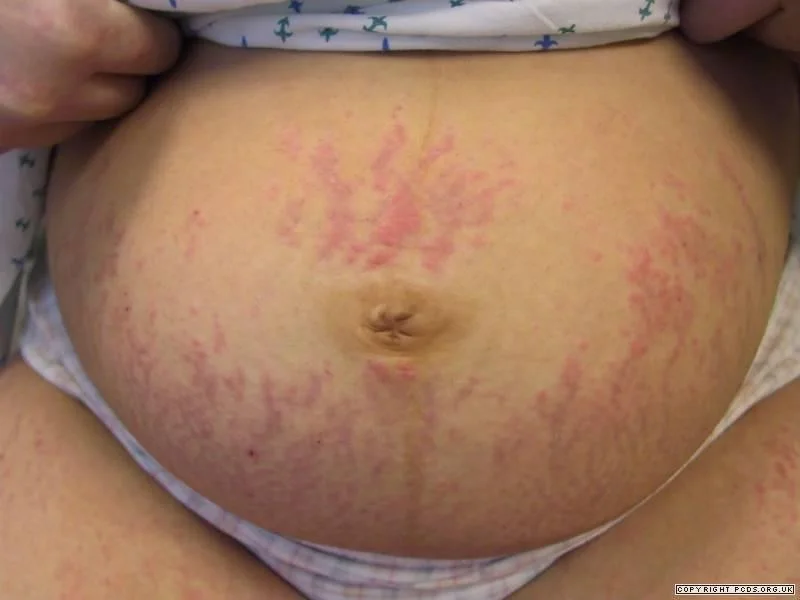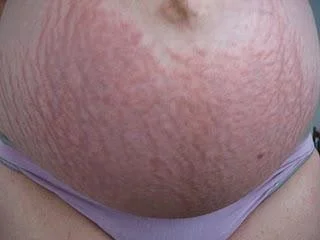PUPPP
-
This is a case of pruritic urticarial papules and plaques of pregnancy (PUPPP)
-
Common dermatosis of pregnancy
-
Also known as Polymorphic eruption of pregnancy(PEP)
-
Incidence: 1 in 300 pregnancies
-
Onset during 3rd trimester (mean = 35 weeks)
-
Predominantly affects Primigravids
Pathogenesis
The pathogenesis is unclear.
- One leading theory is abdominal wall distention, especially since PUPPP is more common in primigravids and multiple gestation pregnancies.
- Hormonal, immunological, factors may also play a role.
Clinical Findings
1-Typical lesions are erythematous urticarial papules surrounded by a pale halo.
2- In the vast majority of cases, the eruption starts within the abdominal striae (with periumbilical sparing) and progresses from there.
3- Less commonly, PUPPP can present with blisters and the umbilicus may be involved
severe itching
Evaluation
The diagnosis is made based on the history and the clinical picture.
A biopsy is rarely helpful in diagnosing PUPPP.
It does, however, rule out pemphigoid gestationis, which is an important differential diagnosis. Z
-
If the patient has an atypical presentation, or if you are concerned about pemphigoid gestationis, consider referral to a dermatologist or a skin biopsy with immunofluorescence.
-
A skin biopsy of PUPPP would reveal non-specific findings
Prognosis
1- Has not been shown to have increased maternal or fetal risks 2- Excellent prognosis 3- Generally resolves within days postpartum 4- No reports of recurrence postpartum, with menses, or with use of oral contraceptives
Treatment
Therapeutic options are aimed at symptomatic relief:
- Topical steroids
- Oral prednisone
- Non-sedating oral antihistamines


Case Two: History
Rasha is a healthy 28-year-old primigravid.
She is in her 34th week of gestation.
Two weeks ago, she developed a pruritic eruption on her abdomen and thighs.
Case Two: Skin Exam
